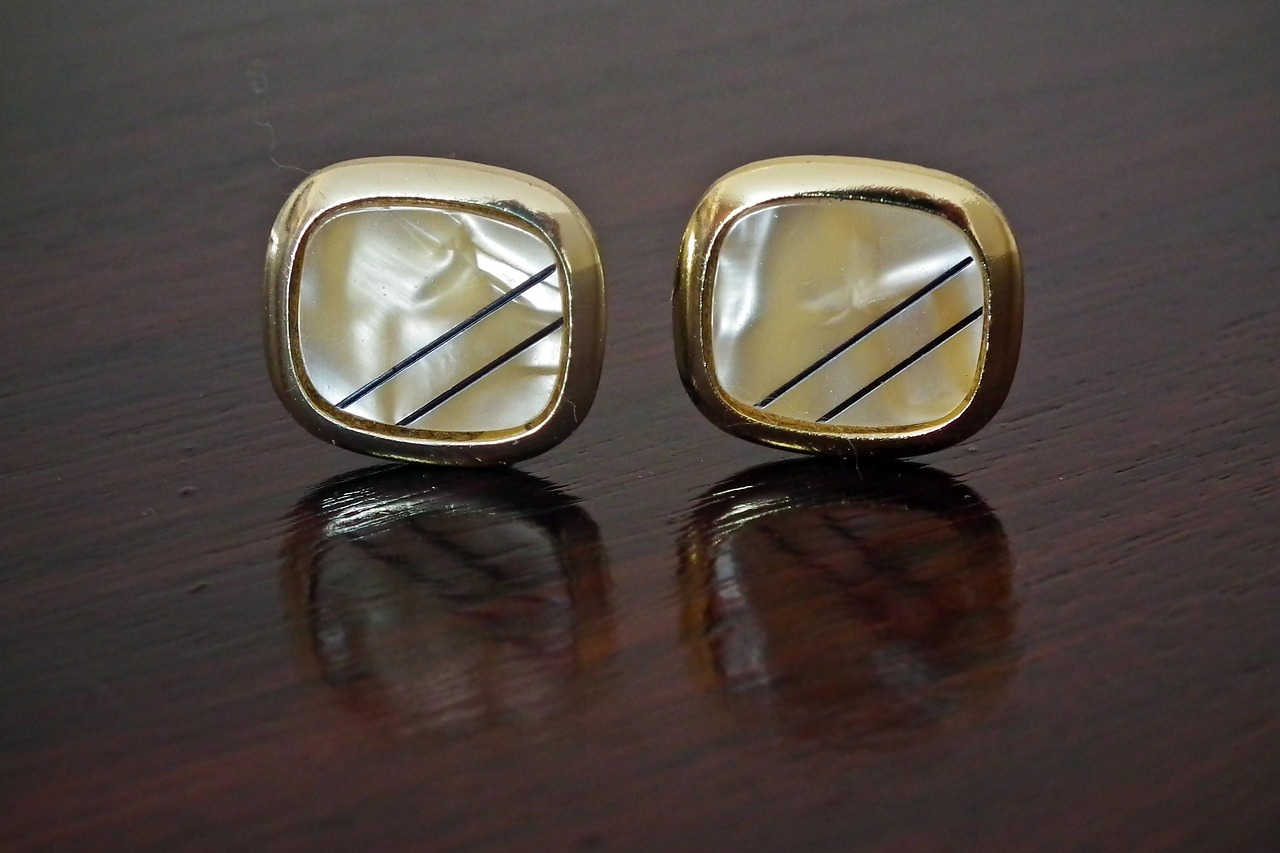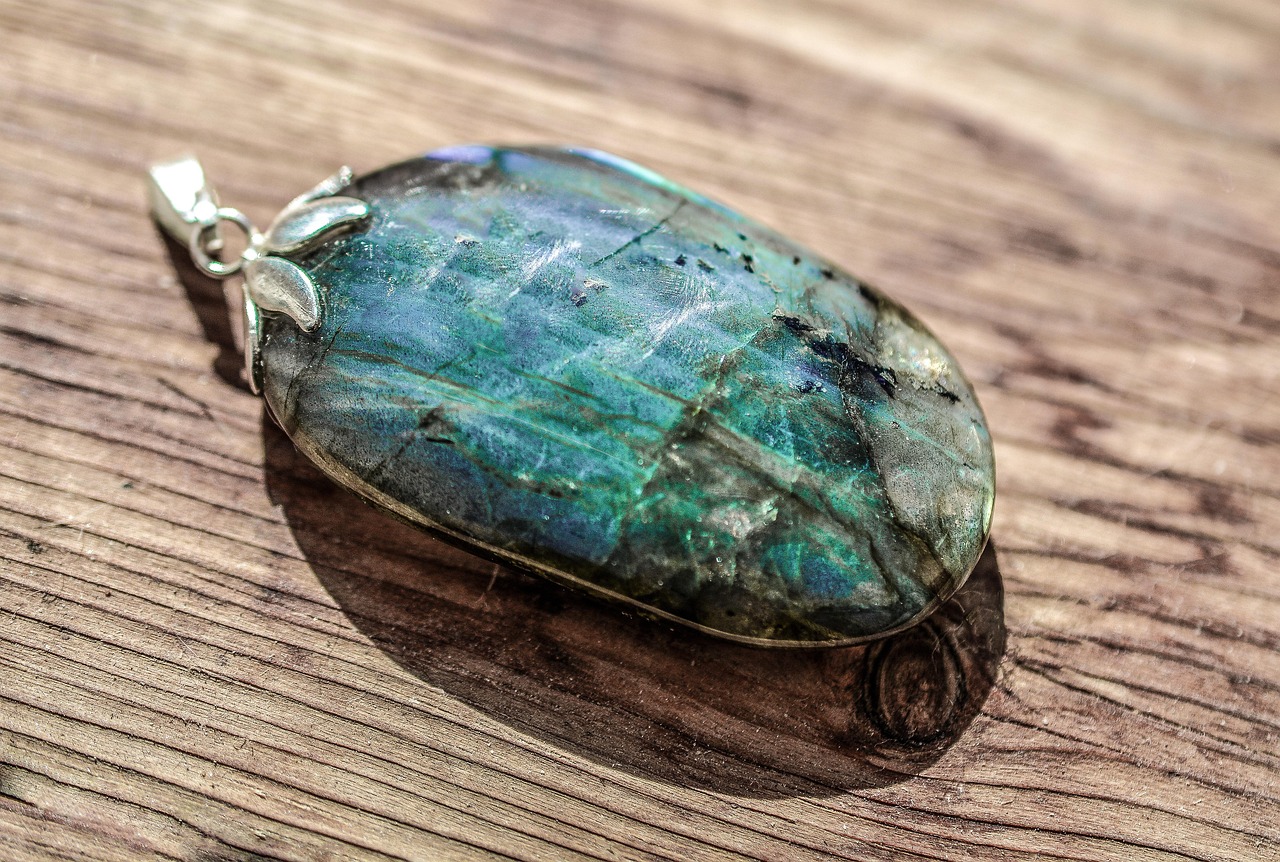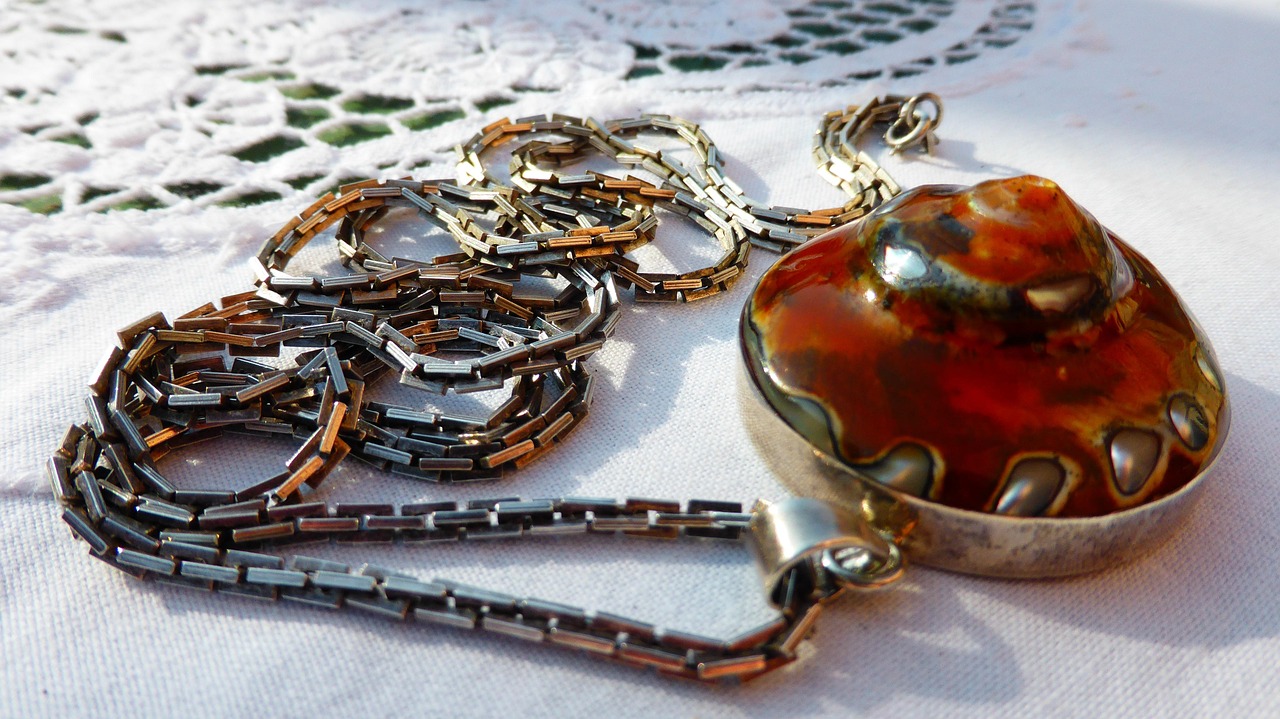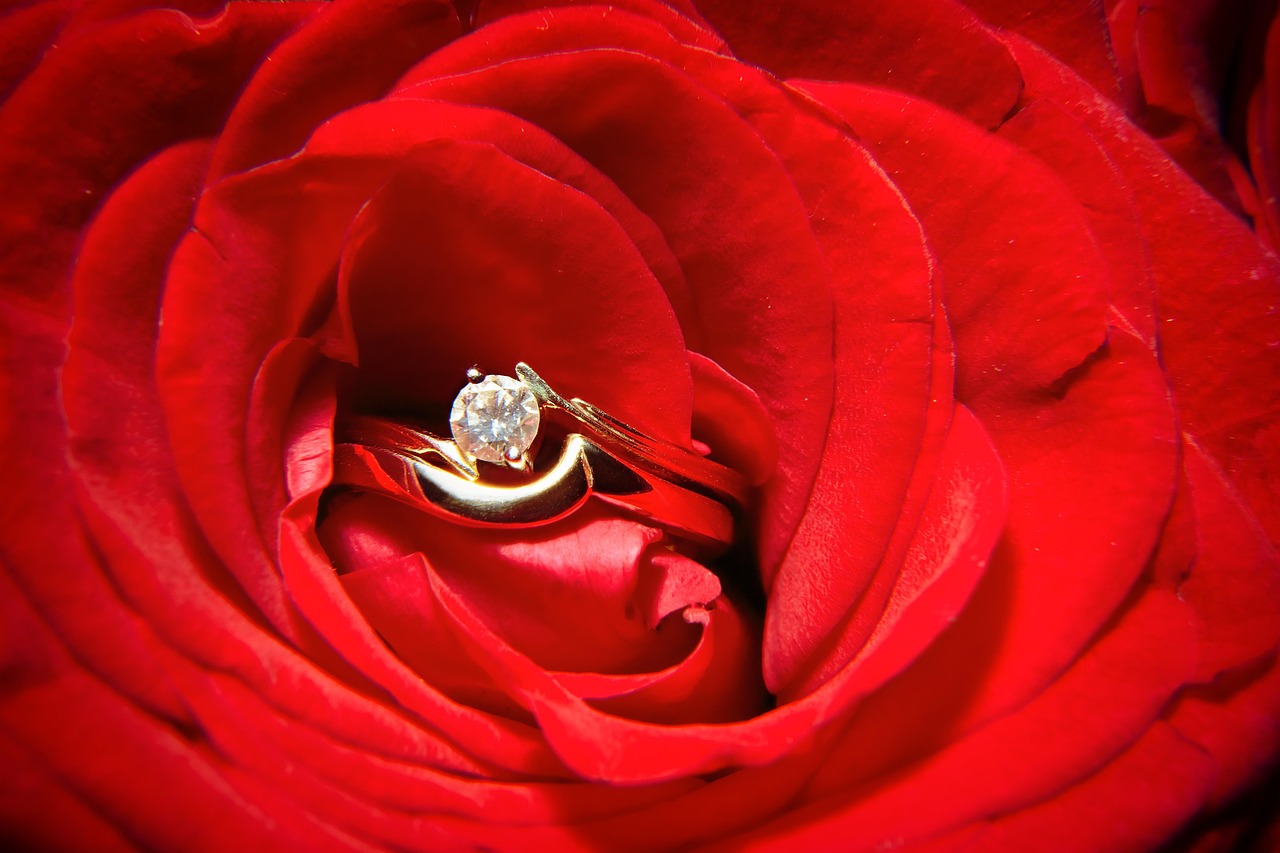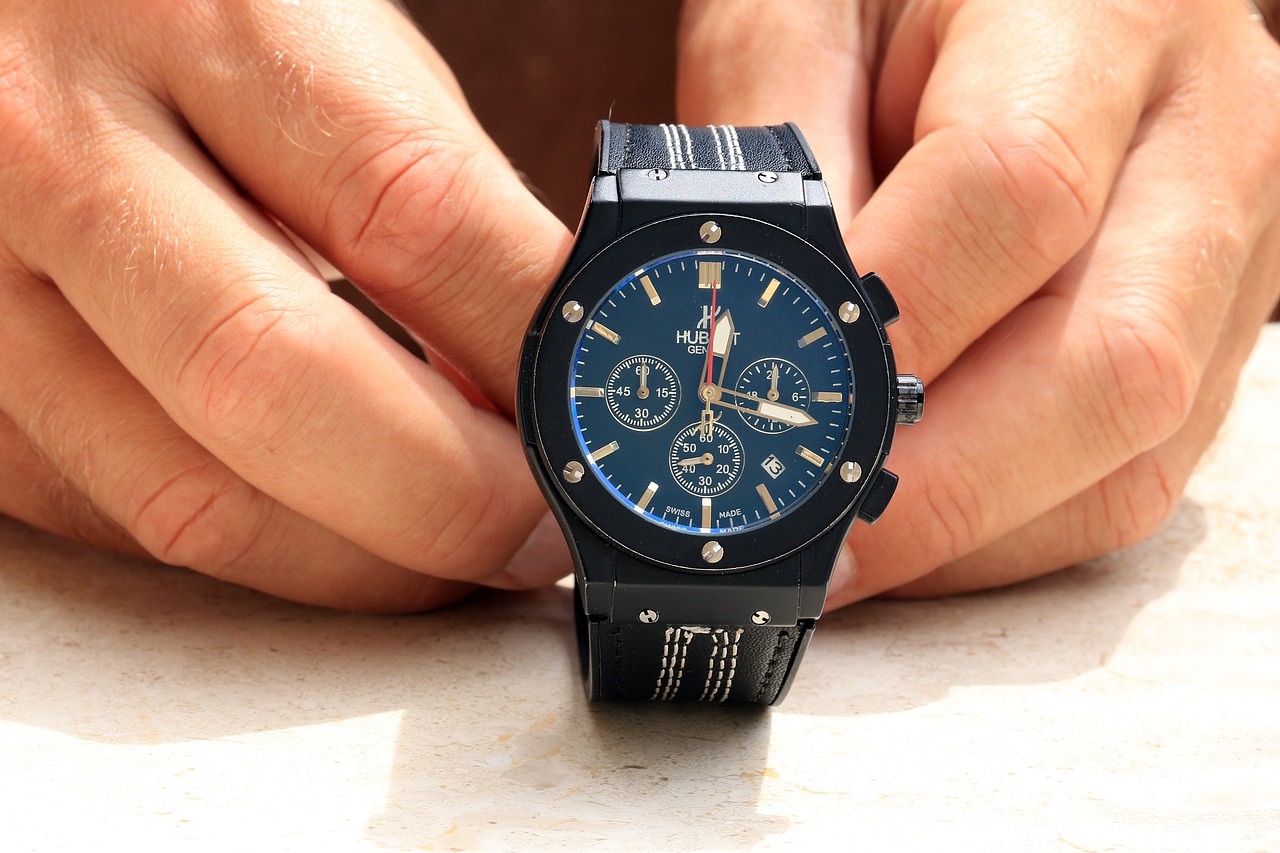This article explores the factors contributing to the enduring value of designer jewelry, examining craftsmanship, brand reputation, market trends, and more to help you understand this fascinating industry.
What Makes Designer Jewelry Unique?
Designer jewelry is distinguished by its exclusive designs, meticulous craftsmanship, and the use of high-quality materials. Unlike mass-produced items, each piece often tells a story, reflecting the designer’s artistic vision. This uniqueness not only makes the jewelry aesthetically appealing but also enhances its resale value. Collectors and enthusiasts are often willing to pay a premium for pieces that are not just accessories but also works of art.
How Does Brand Reputation Affect Value?
The reputation of a jewelry brand plays a pivotal role in determining its market value. Established designers, such as Cartier or Tiffany & Co., have built trust and recognition over decades. Their legacy, combined with the exceptional quality of their pieces, allows them to command higher prices. When investing in designer jewelry, understanding the brand’s history and reputation is essential, as it can significantly impact future resale opportunities.
What Role Does Craftsmanship Play?
Exceptional craftsmanship is a hallmark of designer jewelry. Each piece is often handcrafted with meticulous attention to detail, employing superior techniques that ensure durability and aesthetic appeal. This level of artistry not only enhances the beauty of the jewelry but also contributes to its long-term value. Buyers often seek pieces that showcase intricate designs and high-quality finishes, knowing they will stand the test of time.
Are Materials Used in Designer Jewelry Superior?
Designer jewelry frequently incorporates high-quality materials, including precious metals and ethically sourced gemstones. These superior materials are not only visually stunning but also contribute to the overall value and longevity of the pieces. For instance, gold and platinum are known for their durability, while diamonds and rare gemstones are valued for their beauty and rarity. This focus on quality materials ensures that designer jewelry remains a wise investment.
How Do Limited Editions Impact Value?
Limited edition pieces create a sense of exclusivity that can significantly enhance their desirability among collectors. When a designer releases a limited number of pieces, it fosters a sense of urgency and competition, driving up demand and value. As the designer’s popularity grows, these limited editions can appreciate substantially, making them a smart choice for investors looking to maximize their returns.
How Do Market Trends Influence Designer Jewelry?
Market trends are crucial in determining the value of designer jewelry. Understanding current trends can help buyers make informed decisions about which pieces may appreciate over time. For instance, certain styles or materials may become fashionable, increasing demand for specific types of jewelry. Staying informed about these trends can enhance the investment potential of designer pieces.
What is the Impact of Provenance on Value?
The provenance, or history of ownership, can greatly influence a piece’s value. Jewelry with a notable history, such as previous ownership by a celebrity or inclusion in a significant event, often fetches higher prices at auctions. This historical significance adds a layer of intrigue and desirability, making such pieces particularly attractive to collectors.
How Does Condition Affect Resale Value?
The condition of designer jewelry is critical when determining its resale value. Well-maintained pieces, especially those with original packaging and certification, tend to retain their value better than those that show signs of wear. Buyers should prioritize pieces that have been properly cared for, as this will ensure a better return on investment.
What Are the Best Practices for Investing in Designer Jewelry?
Investing in designer jewelry requires careful consideration and strategy. Buyers should research brands, understand market dynamics, and focus on acquiring pieces that are likely to appreciate in value. Networking with experts and attending jewelry shows can provide valuable insights into emerging trends and investment opportunities.
Can Designer Jewelry Serve as an Investment?
Designer jewelry can indeed be a lucrative investment if approached wisely. With the right choices and knowledge, it can appreciate over time, offering both aesthetic pleasure and financial return. As the market for designer jewelry continues to grow, savvy investors can capitalize on this unique blend of art and investment potential.
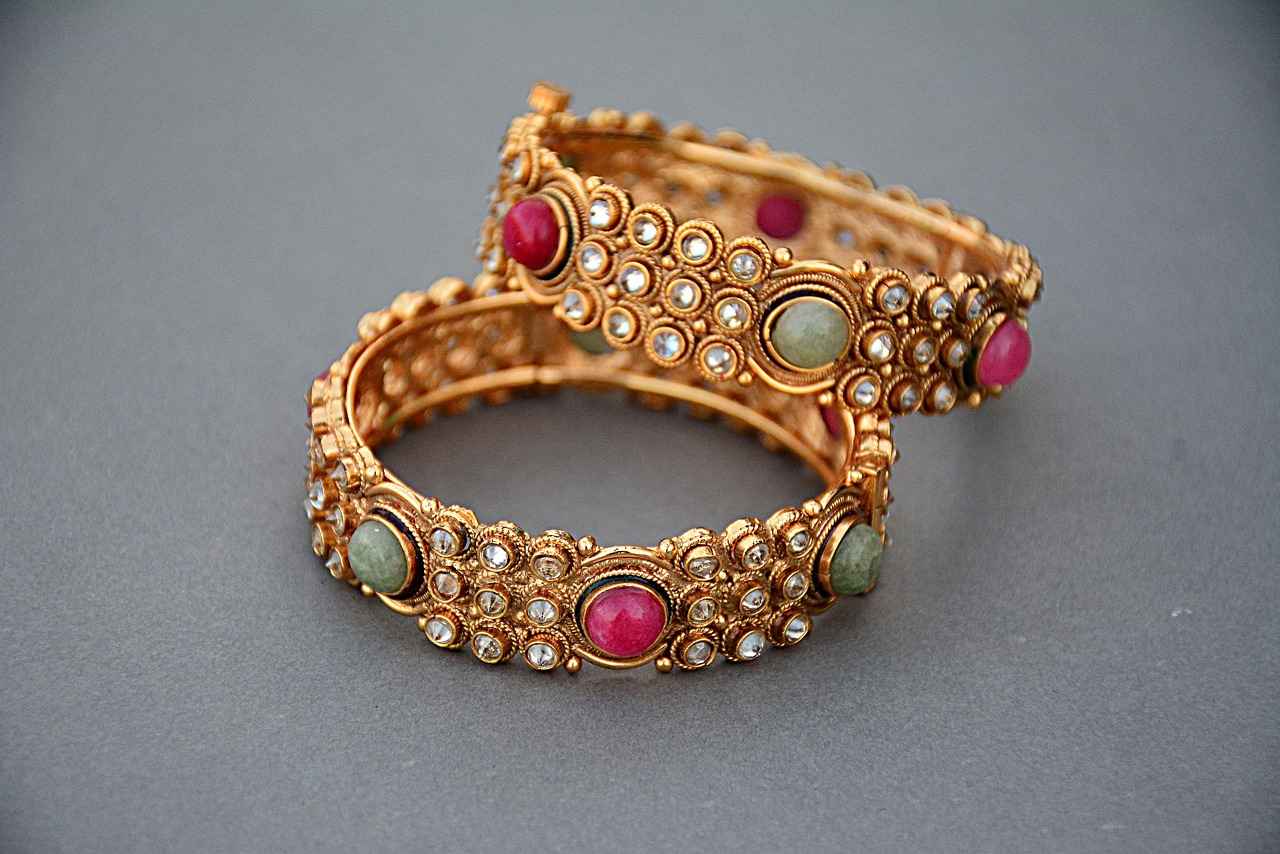
What Makes Designer Jewelry Unique?
Designer jewelry is not just an accessory; it is an expression of art, culture, and individuality. The uniqueness of designer jewelry lies in several critical factors that set it apart from mass-produced pieces. This article delves into the elements that contribute to the distinctiveness of designer jewelry, highlighting why it is often considered a valuable investment.
Designer jewelry stands out due to its exclusive designs, high-quality materials, and the artistry involved in its creation. Unlike non-designer pieces, which may follow trends or replicate popular styles, designer jewelry often embodies the personal vision of the artist. Each piece tells a story, showcasing the designer’s creativity and craftsmanship.
- Exclusive Designs: Designer jewelry often features one-of-a-kind or limited edition pieces. This exclusivity not only enhances its aesthetic appeal but also contributes to its potential for higher resale value.
- High-Quality Materials: The materials used in designer jewelry, such as precious metals and ethically sourced gemstones, are typically of superior quality. This not only enhances the beauty of the piece but also ensures its longevity.
- Artistry and Craftsmanship: Exceptional craftsmanship is a hallmark of designer jewelry. Skilled artisans invest time and effort into every detail, ensuring that each piece is not only visually stunning but also structurally sound.
Moreover, the brand reputation of a designer plays a significant role in establishing uniqueness. Well-known designers have a legacy that adds to the allure of their pieces. Buyers are often willing to pay a premium for jewelry from established brands, as they associate these names with quality and trust.
The reputation of a jewelry brand significantly impacts its value. Established designers often command higher prices due to their legacy, craftsmanship, and the trust they have built over time. A piece from a renowned designer not only carries the weight of its craftsmanship but also the prestige of the brand, making it a sought-after item among collectors.
Additionally, the market trends can influence the desirability of designer jewelry. For instance, if a particular designer gains popularity, the demand for their pieces may increase, consequently driving up their value. Understanding these trends can help buyers make informed decisions when investing in designer jewelry.
Exceptional craftsmanship is a hallmark of designer jewelry. The meticulous attention to detail and superior techniques ensure that these pieces not only look stunning but also withstand the test of time. This level of craftsmanship is often a significant factor in the overall value of the jewelry.
Designer jewelry often incorporates high-quality materials, such as precious metals and gemstones. These superior materials contribute to the overall value and longevity of the pieces. For example, a ring made with ethically sourced diamonds or gold will not only look exquisite but also retain its value over time.
Limited edition pieces create exclusivity, making them more desirable among collectors. This scarcity can significantly enhance a piece’s value over time, especially if the designer gains popularity. Collectors often seek out these unique items, knowing that their limited availability can lead to higher resale prices.
In summary, the uniqueness of designer jewelry is a combination of exclusive designs, high-quality materials, exceptional craftsmanship, and brand reputation. These factors contribute to its enduring value and appeal, making it a worthwhile investment for those who appreciate both beauty and artistry.

How Does Brand Reputation Affect Value?
The value of jewelry is influenced by several factors, among which brand reputation plays a pivotal role. A well-established brand not only signifies quality but also embodies a legacy that resonates with consumers. This article delves deeper into how brand reputation enhances the value of jewelry, exploring its implications for both buyers and sellers.
Brand reputation in the jewelry industry refers to the perception and trust that consumers have towards a specific brand. Established designers often have a long history of creating exquisite pieces, which fosters a sense of confidence among buyers. This trust is built over time through consistent quality, innovative designs, and excellent customer service.
Established designers command higher prices for several reasons:
- Legacy: Brands with a rich history often carry a narrative that adds emotional value to their pieces.
- Craftsmanship: Renowned designers are known for their meticulous attention to detail and superior techniques, ensuring that each piece is not just a product but a work of art.
- Trust: A brand that has been around for years has built a loyal customer base, which often leads to repeat purchases and referrals.
Consumers are often willing to pay a premium for jewelry from reputable brands. This willingness is driven by the assurance of quality and the prestige associated with owning a piece from a well-known designer. For many, purchasing designer jewelry is not just about the item itself but also about the status it conveys. This phenomenon can lead to a higher resale value, making it an appealing investment.
Effective marketing strategies significantly enhance a brand’s reputation. Luxury brands often invest heavily in advertising campaigns, collaborations with renowned personalities, and participation in prestigious events. These efforts not only increase visibility but also reinforce the brand’s image as a leader in the industry.
Yes, brand reputation can evolve. Factors such as changes in management, shifts in consumer preferences, and market trends can all impact how a brand is perceived. For instance, a brand that once represented luxury may lose its appeal if it fails to adapt to modern tastes or if it becomes too accessible. Conversely, lesser-known brands can elevate their status through strategic marketing and high-quality offerings.
When looking to invest in jewelry, it’s crucial to identify reputable brands. Here are some tips:
- Research the brand’s history and legacy.
- Look for reviews and testimonials from previous customers.
- Check for certifications or awards that validate the brand’s craftsmanship.
- Examine their presence in the industry, such as participation in trade shows or collaborations with other luxury brands.
Purchasing jewelry from lesser-known brands may come with risks, including:
- Quality Assurance: Without a proven track record, there’s a higher chance of receiving subpar craftsmanship.
- Resale Value: Lesser-known brands typically do not hold their value as well as established ones, making them less favorable investments.
- Customer Service: Established brands often have better customer support and return policies, which can be crucial for buyers.
In conclusion, brand reputation is a crucial factor that significantly affects the value of jewelry. Established designers, through their legacy, craftsmanship, and consumer trust, command higher prices and maintain a loyal customer base. Understanding these dynamics can empower buyers to make informed decisions when investing in jewelry, ensuring they choose pieces that not only appeal aesthetically but also hold their value over time.
What Role Does Craftsmanship Play?
When it comes to designer jewelry, the quality of craftsmanship is paramount. This article delves into the significant role that craftsmanship plays in the value and appeal of these exquisite pieces.
Exceptional craftsmanship is more than just a skill; it is an art form that combines creativity, precision, and dedication. Designer jewelry is often characterized by:
- Meticulous Attention to Detail: Every facet, curve, and setting is crafted with precision, ensuring that the final piece is visually stunning.
- Superior Techniques: Skilled artisans employ advanced techniques that enhance the durability and aesthetic appeal of the jewelry.
- Unique Designs: Each piece often features distinctive designs that set it apart from mass-produced items, reflecting the designer’s individual style and vision.
The longevity of jewelry is largely influenced by the quality of craftsmanship involved in its creation. Pieces that are meticulously crafted tend to:
- Withstand Wear and Tear: High-quality materials combined with expert techniques ensure that the jewelry can endure daily use without losing its charm.
- Maintain Value Over Time: Well-crafted pieces often appreciate in value, as they are seen as timeless investments rather than fleeting trends.
Indeed, several techniques are pivotal in elevating the craftsmanship of designer jewelry:
- Handcrafting: Many designers prefer handcrafting their pieces, allowing for intricate details that machines cannot replicate.
- Stone Setting: Expert stone setting is crucial, as it not only secures the stones but also enhances their brilliance and overall aesthetic.
- Finishing Techniques: Polishing and finishing are essential to ensure that the jewelry has a flawless surface, adding to its allure.
Artistry is the soul of designer jewelry. It transforms basic materials into masterpieces that tell a story. The fusion of creativity and skill results in:
- Emotional Connection: Each piece often resonates with the wearer on a personal level, making it more than just an accessory.
- Cultural Significance: Many designers incorporate cultural elements into their work, adding depth and meaning to their creations.
Consumers can identify quality craftsmanship through various indicators:
- Brand Reputation: Established brands often have a history of quality and craftsmanship that consumers trust.
- Reviews and Testimonials: Feedback from previous buyers can provide insights into the quality and durability of the jewelry.
- Certificates of Authenticity: Many designer pieces come with certificates that guarantee their quality and craftsmanship.
Investing in jewelry that showcases exceptional craftsmanship is a wise decision. Not only does it offer aesthetic pleasure, but it also serves as a sound financial investment. As trends change, pieces that are well-crafted tend to retain their value and can even appreciate over time.
In summary, the role of craftsmanship in designer jewelry cannot be overstated. It is the backbone of quality, longevity, and value, making it a crucial factor for both consumers and collectors alike.
Are Materials Used in Designer Jewelry Superior?
When it comes to designer jewelry, the materials used play a pivotal role in defining its quality and value. This segment of the jewelry market is characterized by the incorporation of high-quality materials, which not only enhance the aesthetic appeal but also ensure longevity and durability. In this article, we will explore why the materials used in designer jewelry are considered superior and how they contribute to the overall worth of these exquisite pieces.
Designer jewelry typically utilizes a variety of premium materials that are not only visually stunning but also robust. Some of the most common materials include:
- Precious Metals: Gold, platinum, and silver are frequently used due to their intrinsic value and resistance to tarnishing.
- Gemstones: Designer pieces often feature high-quality gemstones such as diamonds, sapphires, and emeralds, which are carefully selected for their clarity and color.
- Alternative Materials: Some designers experiment with unconventional materials like resin, wood, or ethically sourced stones, adding a unique flair to their collections.
The use of high-quality materials in designer jewelry significantly contributes to its longevity. Unlike mass-produced items, designer pieces are crafted with meticulous care and attention to detail. This commitment to quality ensures that:
- They can withstand daily wear and tear, maintaining their beauty over time.
- They are less prone to damage or degradation, making them a worthwhile investment.
In recent years, there has been a growing emphasis on ethical sourcing in the jewelry industry. Many designer brands are committed to using materials that are responsibly sourced, ensuring that their impact on the environment and local communities is minimal. This not only enhances the brand’s reputation but also adds value to the pieces, as consumers increasingly favor ethically produced items.
The quality of materials used in designer jewelry directly influences its resale value. Pieces made from precious metals and high-grade gemstones tend to retain their worth better than those made from lower-quality materials. Additionally, the craftsmanship involved in creating these pieces often includes:
- Certification: Many designer jewelry items come with certificates of authenticity, which can significantly enhance their resale potential.
- Provenance: The history behind the materials used can add a layer of desirability, particularly if they are linked to a well-known designer or a significant event.
Market trends also play a crucial role in determining which materials are favored in designer jewelry. For instance, the rise of sustainable fashion has led many designers to explore eco-friendly materials, appealing to a more environmentally conscious consumer base. This shift not only reflects current values but also positions the jewelry as forward-thinking, thus enhancing its marketability.
In conclusion, the materials used in designer jewelry are indeed superior, contributing to the pieces’ overall quality, longevity, and value. From precious metals to ethically sourced gemstones, each component plays a vital role in defining what makes designer jewelry a worthwhile investment. As consumers become more discerning, the emphasis on high-quality materials will continue to shape the landscape of the jewelry industry.
How Do Limited Editions Impact Value?
Understanding the Impact of Limited Editions on Jewelry Value
In the world of designer jewelry, limited edition pieces hold a unique allure that significantly influences their market value. This phenomenon can be attributed to several factors that enhance desirability and investment potential among collectors and enthusiasts alike.
Limited editions are often produced in small quantities, which creates a sense of exclusivity. This scarcity is a key driver of demand, as collectors are often drawn to items that are not widely available. When a piece is labeled as “limited edition,” it suggests that the owner possesses something truly special, which can elevate the piece’s status within the jewelry community.
The principle of supply and demand plays a crucial role in determining the value of limited edition jewelry. As fewer pieces are available, the competition among buyers increases, leading to potential price appreciation over time. This is particularly evident when the designer gains popularity or when the piece is associated with a significant event or collection.
- Unique Designs: Limited editions often feature distinctive designs that set them apart from mass-produced items.
- Artistic Value: Many designers create limited pieces as a form of artistic expression, making them more appealing to collectors who appreciate craftsmanship.
- Investment Potential: Collectors view limited edition jewelry as a sound investment, believing that its value will increase as demand grows.
The reputation of the designer significantly impacts the value of limited edition pieces. Established designers with a strong following can command higher prices, particularly if they have a history of producing sought-after collections. As their popularity rises, so does the desirability of their limited edition items, enhancing their resale value.
Market trends also play a pivotal role in shaping the value of limited edition jewelry. For instance, if a particular style or design becomes fashionable, the demand for limited edition pieces that embody that trend can skyrocket. Collectors who are attuned to these trends can make informed decisions, ensuring they invest in pieces likely to appreciate.
The history of ownership, or provenance, can further enhance the value of limited edition jewelry. Pieces that have been owned by celebrities or have a notable history can fetch significantly higher prices at auctions. This aspect adds a layer of narrative and allure, making the piece even more desirable.
The condition of limited edition jewelry is paramount when it comes to resale value. Well-preserved pieces, especially those with original packaging and documentation, tend to hold their value better than those that show signs of wear. Collectors are often willing to pay a premium for pieces that are in excellent condition, further emphasizing the importance of care and maintenance.
Investing in limited edition jewelry requires careful consideration and research. Buyers should evaluate the designer’s reputation, the uniqueness of the piece, and current market trends. Additionally, understanding the potential for future appreciation is crucial. By making informed decisions, collectors can enhance their chances of acquiring pieces that will not only bring aesthetic pleasure but also serve as valuable investments.
In summary, limited edition jewelry pieces are more than just beautiful accessories; they are potential investments that can appreciate significantly over time. By understanding the factors that contribute to their value, collectors can navigate the market with greater confidence and insight.
How Do Market Trends Influence Designer Jewelry?
Market trends are essential in shaping the landscape of designer jewelry, influencing not only consumer preferences but also the overall value of pieces in the market. As trends evolve, they can significantly affect what buyers are looking for, which in turn impacts the resale value of designer jewelry. Understanding these trends is crucial for both collectors and casual buyers alike.
Currently, several key trends are shaping the designer jewelry market:
- Sustainability: There is a growing demand for ethically sourced materials and sustainable practices. Consumers are increasingly favoring brands that prioritize environmental responsibility.
- Customization: Personalized jewelry pieces are gaining popularity. Buyers are looking for unique designs that reflect their individual styles and stories.
- Vintage and Retro Styles: Nostalgia plays a significant role, with many consumers gravitating towards vintage-inspired designs that echo the elegance of past decades.
- Bold and Statement Pieces: In recent years, statement jewelry has surged in popularity. Oversized earrings, chunky rings, and layered necklaces are trending as fashion statements.
For buyers, being aware of current market trends can lead to more informed purchasing decisions. By aligning their choices with popular trends, buyers can enhance the likelihood that their jewelry will appreciate over time. For instance, a piece that embodies the sustainable movement may not only be a responsible choice but could also become highly sought after, increasing its value.
Market trends can directly influence the resale value of designer jewelry. Pieces that are in line with current trends tend to sell better and at higher prices. For example, a designer piece that features eco-friendly materials may attract more buyers, thus driving up its resale value. Conversely, pieces that fall out of favor may struggle to find buyers, resulting in lower resale values.
Social media platforms have become powerful tools for influencing jewelry trends. Influencers and celebrities often showcase their jewelry choices online, setting off waves of popularity for specific styles. As a result, buyers are more likely to seek out pieces that are trending on social media, which can significantly impact their value in the market.
To stay ahead of market trends, buyers should consider the following strategies:
- Follow Fashion Influencers: Keeping an eye on what influencers are wearing can provide insights into emerging trends.
- Attend Jewelry Shows: Participating in trade shows and exhibitions can offer firsthand knowledge of upcoming trends.
- Join Jewelry Enthusiast Communities: Engaging with communities, both online and offline, can keep buyers informed about popular pieces and styles.
In conclusion, understanding how market trends influence designer jewelry is essential for making informed purchasing decisions. By keeping abreast of current trends, buyers can not only enjoy their jewelry but also ensure that their investments hold or increase in value over time.
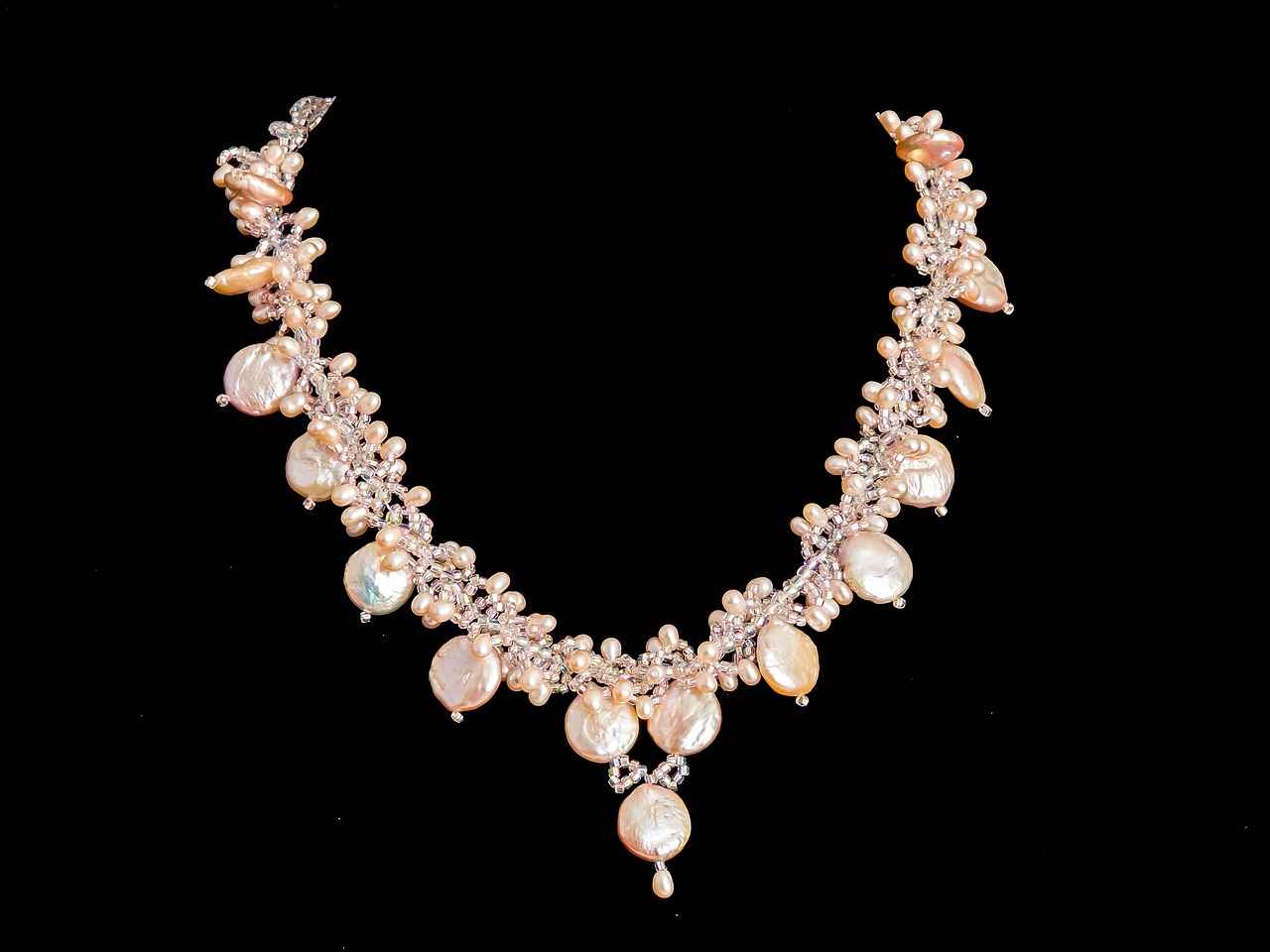
What is the Impact of Provenance on Value?
The concept of provenance refers to the history of ownership of a piece of jewelry, and it plays a crucial role in determining its value. Understanding the impact of provenance can help collectors and investors make informed decisions when buying or selling jewelry. In this section, we will explore how provenance influences value, the significance of celebrity ownership, and the effect of historical context.
Jewelry with a documented provenance tends to attract higher prices at auctions and in private sales. This is because a well-established history can add layers of significance to a piece, making it more desirable to collectors. When a piece has been owned by a notable figure, such as a celebrity or historical personality, its value can increase exponentially. This phenomenon is often seen in pieces that have been worn by famous individuals during significant events, such as red carpet appearances or royal ceremonies.
Pieces once owned by celebrities often carry a premium due to their connection to the famous individual. For instance, jewelry that has been worn by a beloved actress or a renowned musician can become a coveted item for fans and collectors alike. The story behind the piece, including its association with high-profile events, can enhance its allure and perceived value. Celebrity provenance not only adds a narrative but also creates a sense of exclusivity, making it more appealing to potential buyers.
The historical context in which a piece was created or owned can also impact its value. Jewelry that has survived significant historical events, such as wars or cultural shifts, may be seen as a symbol of resilience or change. Pieces linked to important movements or eras can command higher prices because they represent more than just aesthetic beauty; they embody a narrative that resonates with collectors. For example, Art Deco jewelry from the 1920s may be highly sought after not only for its design but also for its connection to a transformative period in history.
To fully realize the value of provenance, proper documentation is essential. Certificates of authenticity, historical records, and expert appraisals can all serve to validate a piece’s provenance. Buyers are often more willing to invest in jewelry that comes with a clear and verifiable history. This documentation can include previous ownership records, auction catalogs, and photographs of the piece in its historical context, all of which contribute to a comprehensive understanding of its value.
Yes, the impact of provenance extends to resale potential. When a piece has a strong provenance, it is likely to attract more interest in the resale market. Collectors are often willing to pay a premium for pieces with a notable history, as they see them as investments that come with a story. This can lead to increased competition among buyers, driving up the price further. Therefore, understanding the provenance of a piece is not only important for initial purchase considerations but also for future resale opportunities.
In summary, the impact of provenance on the value of jewelry cannot be overstated. Whether through celebrity ownership, historical significance, or proper documentation, provenance adds a layer of depth and desirability that can greatly enhance a piece’s market value. Collectors and investors alike should pay close attention to the history of ownership when evaluating jewelry, as this can be a key factor in its appreciation over time.
How Does Condition Affect Resale Value?
The condition of designer jewelry plays a pivotal role in determining its resale value. Jewelry pieces that are well-maintained, complete with their original packaging and certification, typically retain their value much better than those that exhibit signs of wear and tear. Understanding how condition affects value is essential for both sellers and buyers in the jewelry market.
When it comes to jewelry, the condition is often the first aspect potential buyers assess. A piece that is in excellent condition not only looks more appealing but also signals to buyers that it has been well cared for. This perception can lead to higher offers, especially for designer items.
- Signs of Wear: Scratches, dents, or discoloration can significantly detract from a piece’s value. The more pristine the item, the more likely it is to fetch a higher price.
- Original Packaging: Having the original box, pouch, or certificate of authenticity can enhance value. These items not only serve as proof of authenticity but also add to the overall presentation of the jewelry.
- Maintenance Records: Documentation of regular maintenance or repairs can also bolster a piece’s value. It shows that the owner has taken proactive steps to preserve the jewelry.
Different types of designer jewelry can have varying impacts based on their condition. For instance, a diamond ring with minor scratches might still hold significant value due to the quality of the stone, whereas a costume jewelry piece showing wear may struggle to retain its value.
The history of a piece, or its provenance, can also play a role in how its condition is perceived. A piece with a notable ownership history, even if not in perfect condition, may still command a higher price due to its story and significance.
Maintaining the condition of designer jewelry requires diligence and care. Here are some practical tips:
- Regular Cleaning: Use appropriate cleaning methods for different materials to avoid damage.
- Safe Storage: Store pieces in a cool, dry place, ideally in their original packaging to minimize exposure to elements that can cause wear.
- Professional Maintenance: Consider having pieces professionally inspected and cleaned periodically to ensure they remain in top condition.
Poorly maintained jewelry often leads to diminished resale value. Buyers may perceive signs of wear as indicators of poor quality or lack of care, which can create hesitance in purchasing. This is particularly true for high-end designer pieces, where buyers expect a certain level of quality and upkeep.
In summary, the condition of designer jewelry is crucial in determining its resale value. Well-maintained pieces that come with their original packaging and certification are more likely to retain their value. By understanding the factors that contribute to the condition and taking proactive steps to maintain it, both sellers and buyers can navigate the jewelry market more effectively.
What Are the Best Practices for Investing in Designer Jewelry?
Investing in designer jewelry is an endeavor that requires not only passion but also a strategic approach. The world of luxury jewelry is complex, and understanding its nuances can significantly enhance your investment experience. This article delves into the best practices for investing in designer jewelry, providing valuable insights to help you make informed decisions.
Before making any purchase, conducting thorough research is crucial. Familiarize yourself with various designer brands and their histories. Investigate the craftsmanship behind their pieces, as well as the materials used. Understanding the brand’s reputation can also provide insight into its market position and potential for value appreciation.
The jewelry market is influenced by several factors, including economic conditions, consumer trends, and cultural shifts. Staying informed about these dynamics can help you identify which pieces are likely to appreciate in value. For instance, pieces that align with current fashion trends or those that are featured in popular media may see a surge in demand.
The condition of a piece plays a vital role in its resale value. Always examine jewelry for signs of wear and tear. Pieces that are well-maintained, complete with original packaging and certification, tend to retain their value better. If you plan to invest, prioritize pieces that are in excellent condition or those that can be restored easily.
Limited edition pieces often carry a premium due to their exclusivity. These items are typically produced in smaller quantities, making them more desirable among collectors. Investing in limited editions can be a smart strategy, especially if the designer gains popularity over time.
The history of ownership, or provenance, can significantly impact a piece’s value. Jewelry with an interesting backstory, such as previous ownership by a celebrity or historical figure, often commands higher prices at auctions. When considering an investment, seek pieces with a documented history that adds to their allure.
Regularly following market trends is essential for any investor. Subscribe to jewelry magazines, attend trade shows, and engage with online communities to stay informed. Understanding which styles are gaining popularity can help you make timely purchases that may appreciate in value.
Like any investment, investing in designer jewelry comes with risks. The market can be volatile, and not every piece will appreciate as expected. It’s essential to diversify your collection and not invest more than you can afford to lose. Always be prepared for fluctuations in the market.
Building a diverse collection can mitigate risks. Consider investing in various styles, materials, and designers. This strategy not only enhances your collection aesthetically but also spreads out the potential risk associated with any single piece. Aim for a mix of classic designs and contemporary pieces to appeal to a broader audience.
In conclusion, investing in designer jewelry can be a rewarding experience when approached with knowledge and strategy. By conducting thorough research, understanding market dynamics, and focusing on the condition and provenance of pieces, you can make informed decisions that enhance both the aesthetic and financial value of your collection.
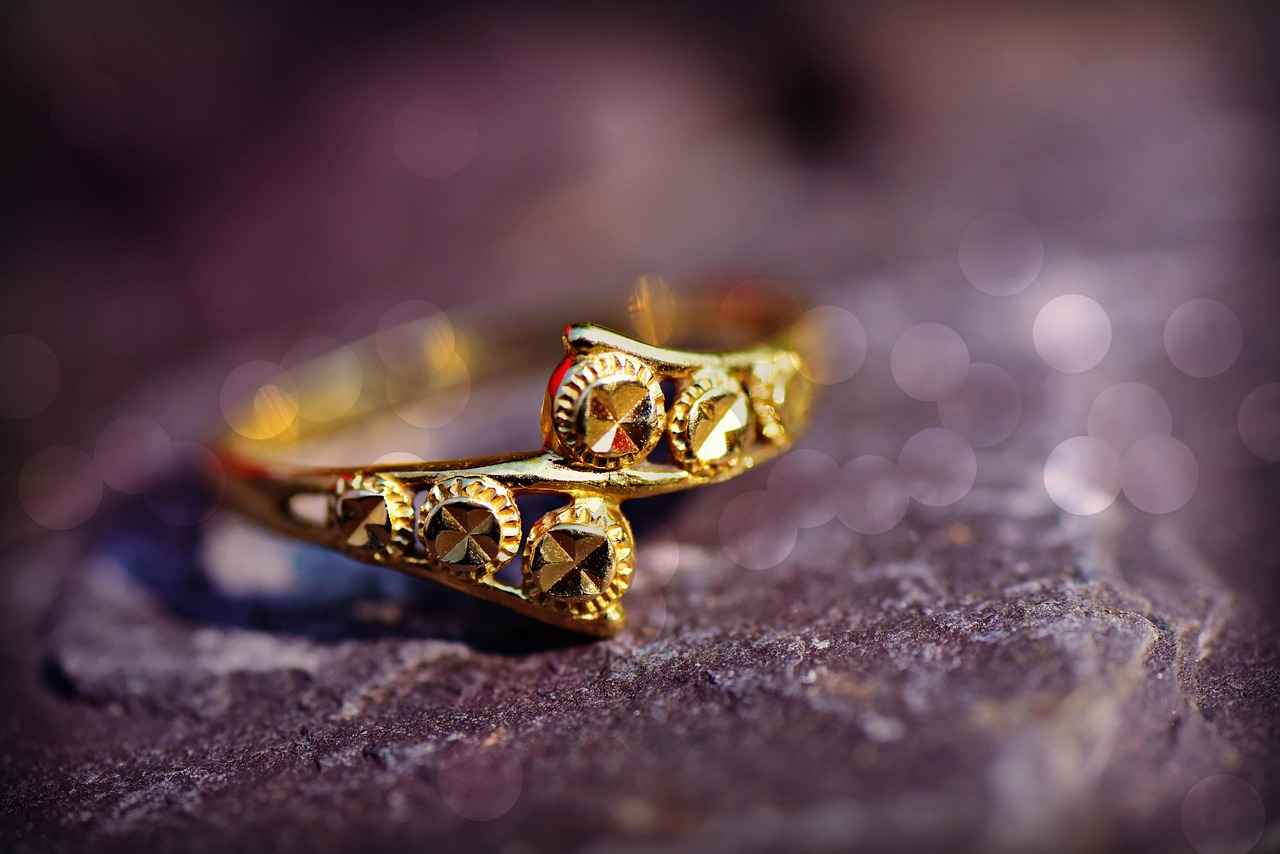
Can Designer Jewelry Serve as an Investment?
Designer jewelry is not merely an accessory; it can also serve as a viable investment opportunity. As the market for luxury goods continues to evolve, many individuals are recognizing the potential for financial appreciation in pieces crafted by renowned designers. In this article, we will explore how designer jewelry can be a lucrative investment when approached with knowledge and strategy.
Several key factors contribute to the investment potential of designer jewelry. Understanding these elements can help buyers make informed decisions:
- Craftsmanship: Designer jewelry is often characterized by exceptional craftsmanship. The meticulous attention to detail and the use of high-quality materials ensure that these pieces not only look stunning but also have longevity.
- Brand Reputation: The reputation of a designer plays a significant role in the value of their jewelry. Established brands often command higher prices due to their legacy and the trust they have built over time.
- Market Trends: Keeping an eye on current market trends can influence which pieces appreciate in value. For instance, vintage styles may become popular, increasing the demand for designer items from specific eras.
Rarity is a crucial factor when it comes to the investment potential of designer jewelry. Limited edition pieces or those that are no longer in production tend to be more desirable among collectors. The scarcity of these items can significantly enhance their resale value, especially as the designer gains recognition and popularity.
The history of ownership, or provenance, can greatly influence the value of designer jewelry. Pieces that have a notable history, such as those previously owned by celebrities or featured in significant events, often fetch higher prices at auctions. Buyers should consider the story behind a piece as an integral part of its overall value.
The condition of designer jewelry is critical when determining its resale value. Well-maintained pieces, especially those that come with original packaging and certification, tend to retain their value better than those showing signs of wear. Regular cleaning and proper storage can help maintain the integrity of these valuable items.
Investing in designer jewelry requires a strategic approach. Here are some best practices:
- Research Brands: Familiarize yourself with reputable brands and their market performance. Understanding which designers have a history of appreciation can guide your choices.
- Follow Market Dynamics: Stay updated on market trends and fluctuations. This knowledge can help you identify which pieces are likely to appreciate over time.
- Consider Aesthetic Appeal: While financial return is important, don’t overlook the aesthetic pleasure that jewelry can provide. Choose pieces that resonate with your personal style.
When approached wisely, designer jewelry can indeed appreciate over time. The combination of high-quality materials, exceptional craftsmanship, and brand reputation creates a compelling case for investing in these pieces. With the right choices, not only can you enjoy the beauty of designer jewelry, but you may also see a significant financial return on your investment.
Frequently Asked Questions
- What factors contribute to the value of designer jewelry?
The value of designer jewelry is influenced by various factors, including exceptional craftsmanship, brand reputation, the quality of materials used, and market trends. Each of these elements plays a crucial role in determining how much a piece can appreciate over time.
- Why is brand reputation so important in jewelry?
Brand reputation is vital because it reflects the trust and legacy built over years. Established designers often have a loyal customer base and a history of quality, which can significantly elevate the perceived value of their pieces.
- How does the condition of a piece affect its resale value?
The condition of designer jewelry is paramount when it comes to resale. Well-maintained items with original packaging and certificates tend to retain their value much better than those that show signs of wear and tear.
- Are limited edition pieces a good investment?
Absolutely! Limited edition pieces are often more desirable due to their exclusivity, which can drive up their value over time, especially if the designer gains popularity. Think of it like owning a rare collectible; the fewer there are, the more valuable they become.
- Can I consider designer jewelry as an investment?
Yes, designer jewelry can be a wise investment if chosen carefully. With the right research and understanding of market dynamics, you can select pieces that not only please the eye but also appreciate in value, offering both beauty and potential financial return.

